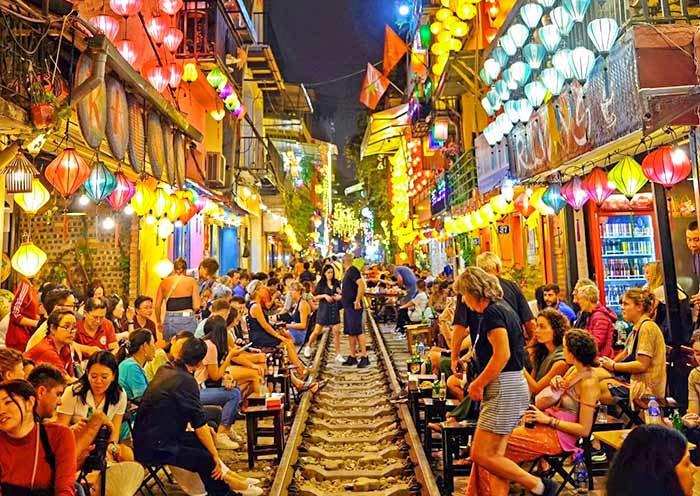Top Attractions & Things to Do in Vietnam
Perhaps you already have some Vietnam's attractions in mind, such as the breathtaking karst formations of Ha Long Bay, the charming town of Hoi An, the beautiful beaches of Nha Trang, or the fascinating exploration of the Mekong Delta. But what else does Vietnam offer in terms of fun and excitement?
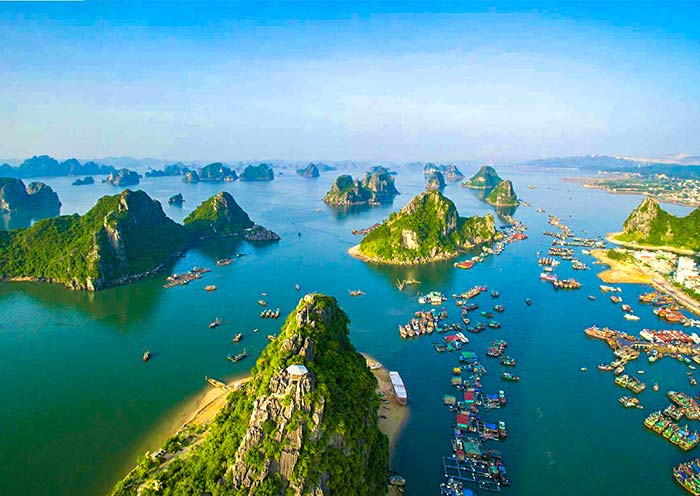
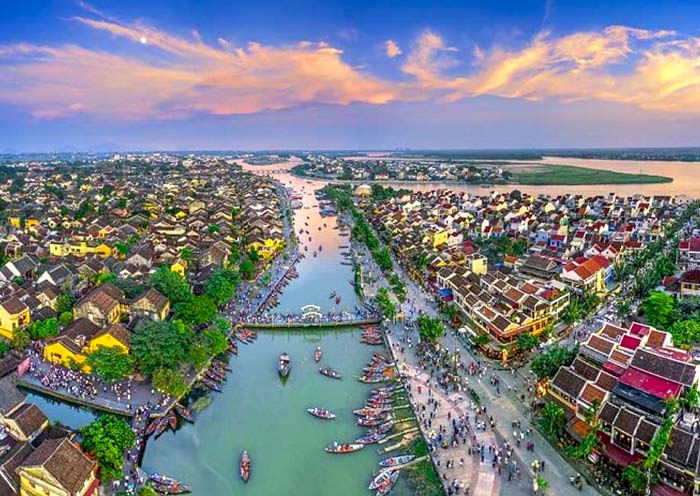
Vietnam's attractions are divided into three distinct regions: the North, Central, and South. Each region has unique charm and sights, showcasing the country's history, traditions, and natural wonders. When creating your travel itinerary, you can consider adding the following attractions based on your preferences, but be careful not to be overwhelmed by the landscapes.
| Region | Cities | Must-See Attractions |
|---|---|---|
| North Vietnam | ||
| Hanoi | Hoan Kiem Lake, Temple of Literature, Old Quarter | |
| Halong Bay | Cruise, Sung Sot Cave, Ti Top Island | |
| Ninh Binh | Tam Coc-Bich Dong, Trang An Landscape Complex | |
| Saba | Fansipan Mountain, Muong Hoa Valley, Cat Cat Village | |
| Central Vietnam | ||
| Da Nang | Marble Mountains, My Khe Beach, Son Tra Peninsula | |
| Hoi An | Ancient Town, Japanese Covered Bridge, An Bang Beach | |
| Hue | Imperial City, Thien Mu Pagoda, Perfume River | |
| South | ||
| Nha Trang | Vinpearl Land, Nha Trang Beach, Po Nagar Cham Towers | |
| Mui Ne | Sand Dunes, Fairy Stream, Fishing Village | |
| Ho Chi Minh City | Notre-Dame Cathedral Basilica, Cu Chi Tunnels | |
| Mekong Delta | Floating Markets (Cai Rang, Cai Be), My Tho | |
| Phu Quoc | Long Beach, Sao Beach, Phu Quoc National Park |
Things to Do in Vietnam:
- Explore Hanoi's Old Quarter, filled with vibrant markets, traditional architecture, and mouthwatering street food.
- Cruise through Halong Bay.
- Visit the Cu Chi Tunnels in Ho Chi Minh City.
- Wander through the Ancient Town of Hoi An.
- Take a boat tour through the lush Mekong Delta, visiting floating markets, fruit orchards, and traditional villages along the way.
- Indulge in street food delicacies such as pho, banh mi, fresh spring rolls, and local seafood dishes.
- Trek through Sapa's Rice Terraces.
15 Best Things to Do in Hanoi: Top Hanoi Attractions with Photos & Tips
11 Best Things to Do in Ho Chi Minh City
11 Most Beautiful Places in Vietnam That You Will Never Forget
How Long to Stay in Vietnam
Hanoi (1-2 Days)
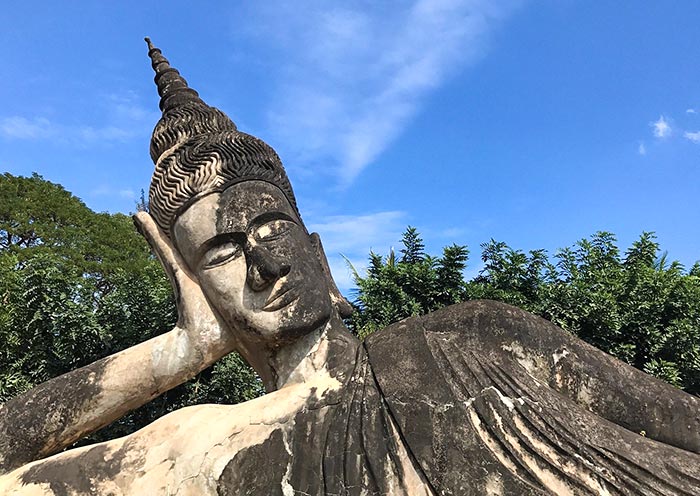
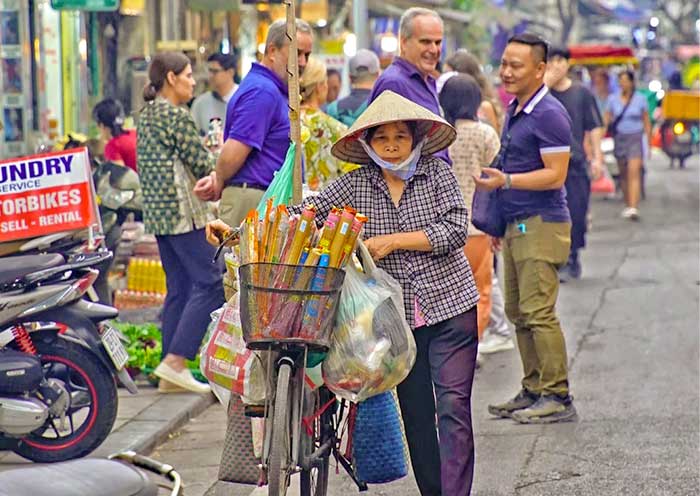
Hanoi, the capital of Vietnam, is renowned for its charming old quarter, historical landmarks, and delectable cuisine. You can spend 1-2 days exploring the highlights of the city center, including must-visit attractions such as Ho Chi Minh Mausoleum, Temple of Literature, and One Pillar Pagoda. Don't miss the opportunity to savor the classic Vietnamese dish, Pho, a flavorful rice noodle soup, as part of your culinary adventures in Hanoi.
To immerse yourself in the city's ambiance, take a ride on a traditional cyclo (pedicab) and leisurely explore the bustling streets. As dusk settles, treat yourself to a mesmerizing performance of water puppetry, a unique Vietnamese art form.
Halong Bay (2-3 Days)
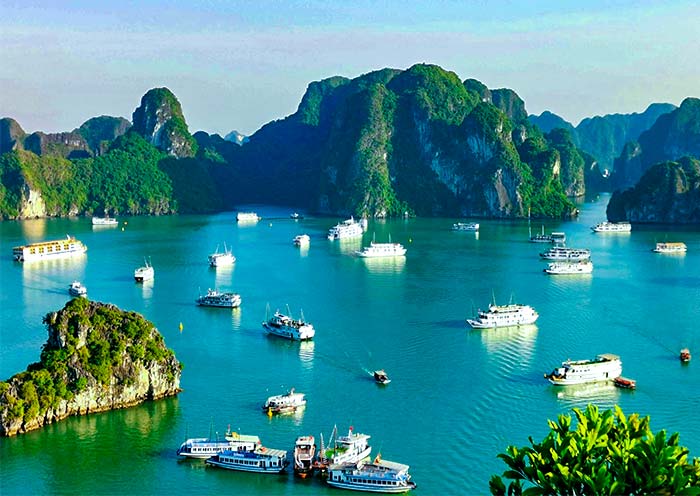
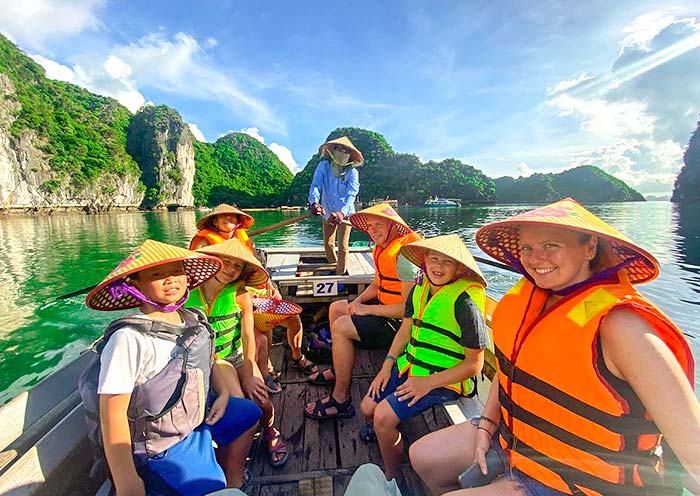
Ha Long Bay is a must-visit destination for any traveler coming to Vietnam. Many people choose to spend 1-3 days exploring this captivating place. Opting for a Ha Long Bay cruise is the best way to navigate through the UNESCO World Heritage Site's emerald waters and limestone karsts.
You can venture into hidden caves like Sung Sot Cave, go kayaking, visit fishing villages, and immerse yourself in the breathtaking scenery. A Ha Long Bay cruise offers the perfect opportunity to marvel at the stunning landscapes and experience the wonders of this renowned natural wonder.
Da Nang & Hoi An (2-3 Days)
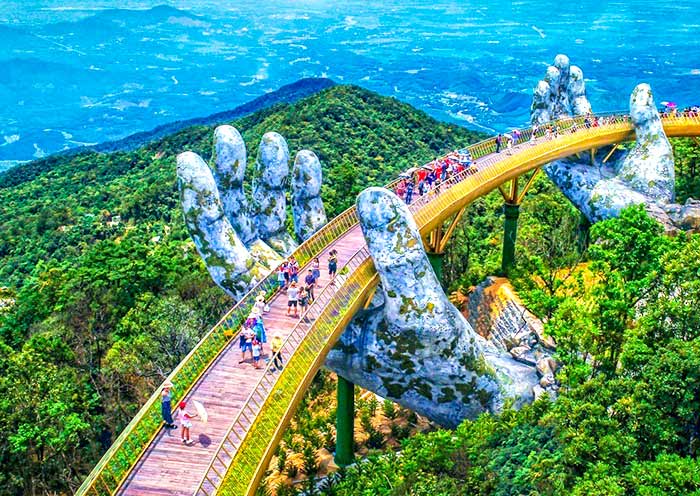
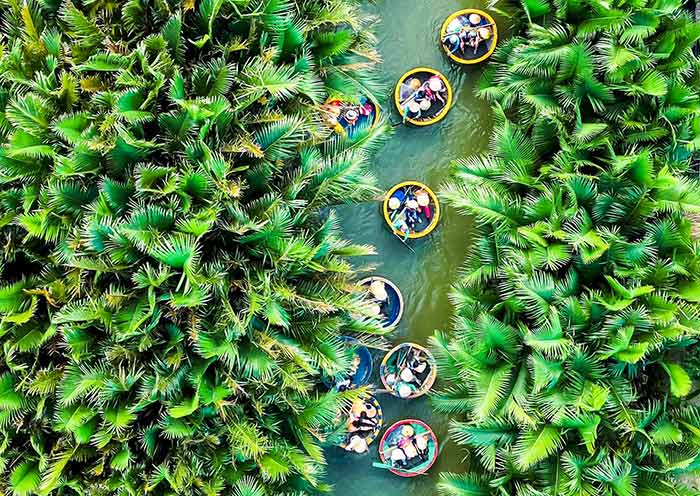
Danang and Hoi An are the most popular destinations in central Vietnam, and due to their proximity (just a 45-minute drive apart), they are often visited together in most Vietnam itineraries. You would need around 2-3 days to fully explore these charming places.
Danang boasts some of the world's most beautiful beaches and is home to one of the largest amusement parks. While in Danang, you can explore attractions like the Marble Mountains, My Khe Beach, and the iconic Dragon Bridge.
On the other hand, Hoi An is the most enchanting ancient town in Vietnam and is also recognized as a UNESCO World Heritage Site. You can immerse yourself in the rich heritage of the town by visiting places like the Chinese Assembly Halls, the Japanese Covered Bridge, and the picturesque Lantern Street. Don't miss the fascinating experience of riding a coconut boat in Cam Thanh, which is one of the highlights of Hoi An.
Ho Chi Minh City (1-2 Days)

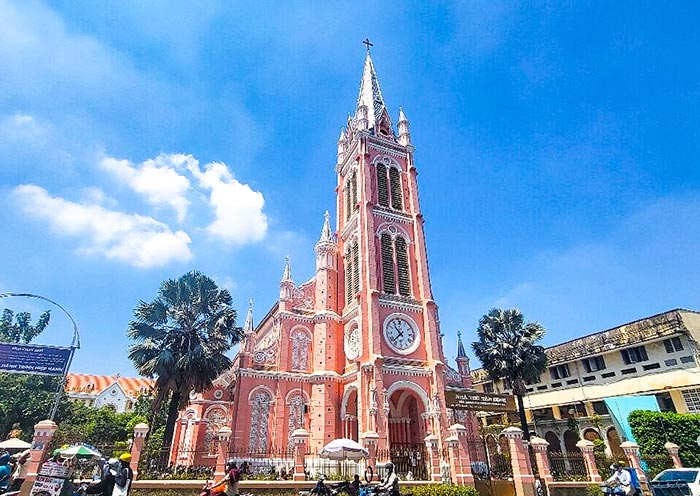
Ho Chi Minh City (formerly known as Saigon) is the economic hub of Vietnam. Spend 1-2 days exploring the city's highlights. Visit iconic landmarks such as the Notre-Dame Cathedral Basilica of Saigon, the War Remnants Museum, and the Cu Chi Tunnels, which are remnants of the Vietnam War. These historical sites offer insights into the city's past and the resilience of its people.
Don't miss the opportunity to explore the bustling Ben Thanh Market, where you can immerse yourself in the vibrant local atmosphere and indulge in the city's delicious street food. Try dishes like pho, banh mi, and fresh spring rolls, which are all popular Vietnamese delicacies.
Mekong Delta (2-3 Days)
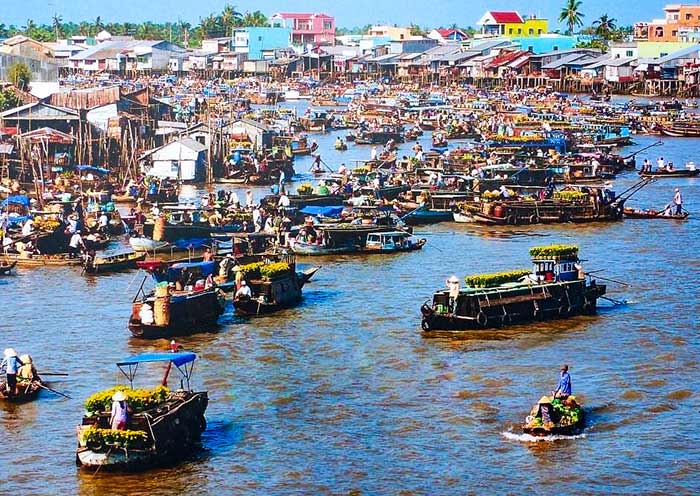
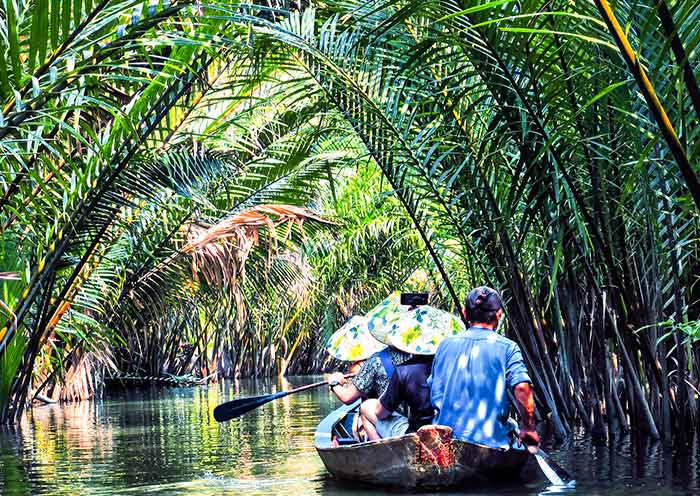
Embark on an adventure into the scenic Mekong Delta, often referred to as the "rice bowl" of Vietnam. Cruise along winding waterways, visit the bustling Cai Rang Floating Market, and explore traditional villages. Alternatively, you can venture to the islands and navigate through lush coconut groves. Immerse yourself in the unique culture and lush landscapes of this region.
As you traverse the waterways, you'll witness the vibrant daily life of the locals, who heavily rely on the Mekong Delta for their livelihoods.
Planning Your Vietnam Itinerary
Once you have obtained the essential information mentioned above, you can start planning your itinerary. Typically, a duration of 5-14 days is sufficient to explore the highlights of Vietnam. You can customize your stay in Vietnam based on your vacation time and interests.
Here is a popular itinerary that covers the most beloved destinations in Vietnam, lasting about 10 days. This itinerary includes Hanoi, Ha Long Bay, Hue, Ho Chi Minh City, and the Mekong Delta.
Day 1-2: Hanoi City Tour
A comprehensive tour of the most iconic landmarks of Hanoi. Start your day with a visit to the Ho Chi Minh Mausoleum, where you can pay your respects to the revered Vietnamese leader. Continue on to the historic One Pillar Pagoda, a unique Buddhist temple built on a single stone pillar. Afterward, stroll along the picturesque shores of Hoan Kiem Lake and explore the charming alleyways of the Old Quarter, where you'll discover a delightful mix of colonial architecture, traditional shops, and lively local life.
Day 3-4: Ha Long Bay Cruise
Ha Long Bay is a UNESCO World Heritage site. Upon arrival, board a boat and set sail through the bay's stunning karst landscapes, dotted with thousands of limestone islands and islets. Enjoy a freshly prepared lunch on board as you glide through the serene waters, stopping to explore hidden caves and secluded beaches along the way. As the sun sets, relax on the deck and soak in the breathtaking scenery.
Day 5: Hoi An Highlights Tour
Delve deeper into the cultural heritage of Hoi An. Start with a serene boat trip through the Cam Thanh coconut palm forest, where you'll have the opportunity to try your hand at traditional basket weaving. Next, wander the streets of the Ancient Town, marveling at the beautifully preserved buildings, ancient tea houses, and lively local markets. Spend the rest of the day exploring Hoi An at your own pace, perhaps indulging in the town's renowned tailoring services or simply soaking in the charming atmosphere.
Day 6: Explore Hue
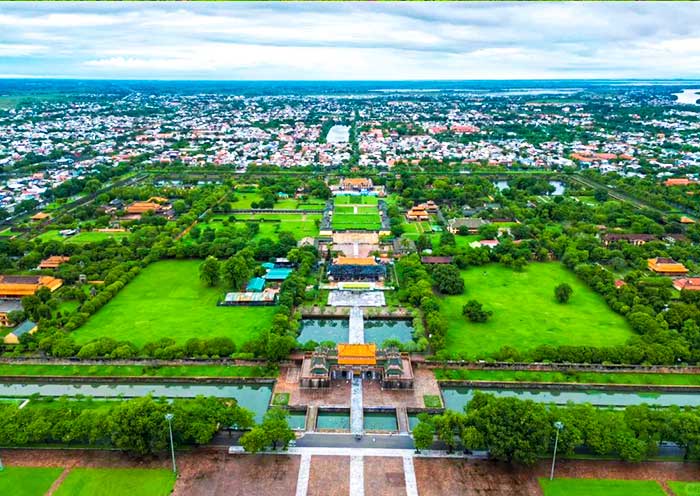
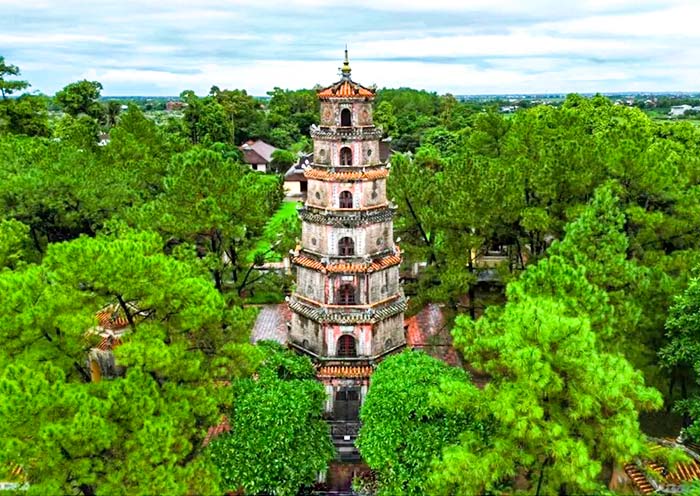
Explore the historic city of Hue, with a stop along the way at the iconic Hai Van Pass. Traverse the stunning mountain road and pass through the famous Hai Van Tunnel, which offers breathtaking views of the coastline. Upon arrival in Hue, you'll visit the impressive Hue Imperial City, a UNESCO World Heritage site that was once the seat of the Nguyen dynasty. Continue your exploration with a visit to the Mausoleum of Emperor Khai Dinh and the iconic Thien Mu Pagoda, a serene and picturesque Buddhist temple overlooking the Perfume River.
Day 7-8: Ho Chi Minh City Tour
Delve into the history and culture of Ho Chi Minh City with a comprehensive city tour. Start by visiting the Cu Chi Tunnels, an extensive underground network that played a crucial role during the Vietnam War. Next, explore the Reunification Palace, the former residence of the President of South Vietnam, and the War Remnants Museum, which offers a poignant and thought-provoking perspective on the country's tumultuous past. Finish your tour with a visit to the beautiful Central Post Office, a stunning example of French colonial architecture.
Day 9-10: Mekong Delta Cruise
Board a boat and navigate the intricate network of canals, stopping to visit local villages, sample freshly picked tropical fruits, and witness the daily life of the Delta's inhabitants. Enjoy a traditional Vietnam lunch before returning to Ho Chi Minh City in the afternoon.
Vietnam Itinerary 2024/2025: From 5 Days to 2 Weeks
Vietnam Itinerary 7 Days: 5 Itinerary Ideas for 1 Week in Vietnam
10 Days in Vietnam: A First-Timer’s Complete Vietnam 10 Days Itinerary
Best Time to Visit Vietnam & When to Go
The best time to visit Vietnam is generally considered to be from November to April. However, it's important to note that the weather in Vietnam can vary based on the region due to its diverse geography.
In general, the dry season from November to April is considered the most suitable time to travel to Vietnam, although there may be some snowfall in northern Vietnam (such as Saba) during December and January.
For northern Vietnam (Hanoi, Halong Bay, Sapa, and Ninh Binh): From April to May and September to November.
In central Vietnam (Danang, Hoi An, Hue), the ideal time to visit is from January to July.
In southern Vietnam (Ho Chi Minh City, Nha Trang, Mekong Delta), the recommended time to visit is from December to May.
Best (Worst) Time to Visit North Vietnam, Travel Tips (2024/2025)
How to Get to Vietnam: By Air, By Land & By Sea
Nowadays, traveling to Vietnam has become increasingly convenient with various transportation options available, including airplanes, trains, roadways, and boats.
By Air - The most convenient and fastest way
Undoubtedly, flying is the quickest and most convenient way to reach Vietnam, especially for travelers from Europe and the Americas. Direct flights to Vietnam are available from countries such as Europe and Australia. For those without direct flights, it's possible to consider connecting flights through cities like Bangkok, Hong Kong, Kuala Lumpur, Seoul, or Singapore to reach Hanoi or Ho Chi Minh City.
The Noi Bai International Airport (HAN) in Hanoi, Tan Son Nhat International Airport (SGN) in Ho Chi Minh City, and Da Nang International Airport (DAD) in Danang are the three main gateways to Vietnam.
By Road (Southeast Asian countries transfer)
If you are traveling from neighboring countries like Cambodia, Laos, or China, you can enter Vietnam via land routes. There are border checkpoints and customs stations that allow land travel. Buses and trains are common modes of transportation for crossing land borders. For example, you can take a bus from Phnom Penh in Cambodia to Ho Chi Minh City or a train from Nanning in China to Hanoi.
By Boat
Thanks to the well-developed waterway transportation along the Mekong River, you can also travel to Vietnam by boat and enjoy the scenic beauty of the Mekong River. You can start your adventure from Phnom Penh in Cambodia and make your way through destinations like Chau Doc and Can Tho in the Mekong Delta, exploring the vibrant Cai Rang Floating Market, before heading to other parts of Vietnam after reaching Ho Chi Minh City.
These various transportation options make traveling to Vietnam accessible and offer different experiences depending on your preferences and starting point.
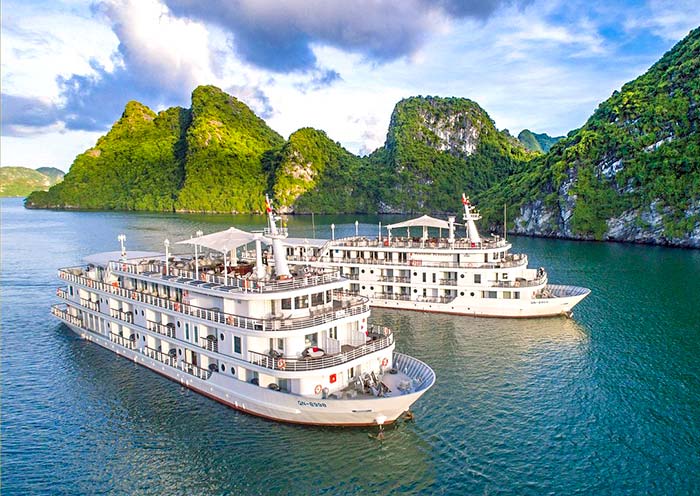
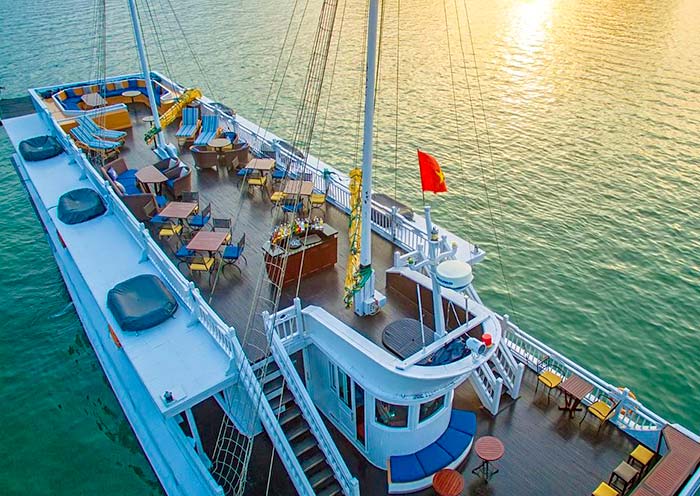
How to Travel Around Vietnam
Domestic Flights:
Vietnam has a well-developed domestic flight network, making air travel a convenient option for covering long distances between major cities. Airlines such as Vietnam Airlines, Vietjet Air, and Bamboo Airways operate regular flights connecting destinations like Hanoi, Ho Chi Minh City, Da Nang, Nha Trang, and more. Domestic flights are relatively affordable and save you time, especially when traveling between regions.
Trains:
Vietnam has an extensive railway system that covers many regions nationwide. Train journeys offer a scenic and leisurely way to travel, allowing you to admire the countryside views. Trains have different classes, including sleeper cabins for overnight travel. However, be prepared for potentially longer travel times compared to other modes of transportation.
Buses:
Buses are a popular mode of transportation in Vietnam, offering an economical and efficient way for both short and long-distance travel. Several bus companies operate routes throughout the country, providing options from standard buses to more comfortable sleeper buses for overnight journeys. Bus services connect major cities, towns, and tourist destinations, offering flexibility and convenience.
Motorbike Rental:
Renting a motorbike is a popular choice for adventurous travelers who want to explore Vietnam at their own pace. However, having experience riding motorcycles and being familiar with local traffic rules and road conditions are crucial. Always prioritize safety and wear a helmet.
Taxis and Ride-Hailing Services:
Taxis are available in cities and larger towns, providing a convenient way for local transportation. Grab is a widely used ride-hailing service that calculates approximate fares based on your destination, helping you avoid some taxi scams.
Cyclos and Tuk-tuks:
In some cities, you will find cyclos (three-wheeled bicycles with passenger seats) or tuk-tuks (motorized three-wheeled vehicles) that offer short-distance transportation or sightseeing tours. It's important to negotiate the price in advance and communicate your destination to avoid any confusion.
How to Get from Hanoi to Halong Bay?
How Much Does it Cost for a Vietnam Tour?
Vietnam offers incredible value for money. The cost of a Vietnam tour can vary depending on various factors, including the duration of the tour, the destinations visited, the level of accommodation, the activities included, and the overall level of comfort and luxury desired.
As a rough estimate, a budget traveler can expect to spend around $20 to $50 per day, while mid-range travelers can budget $40 to $100 per day. Those seeking luxury experiences can expect to spend $200 or more per day. These estimates are flexible and can be adjusted based on personal preferences and travel style.
Budget and backpackers: $20-50 per day
Medium budget: $40-100 per day
Luxury travel: At least $200 per day
Here's a breakdown of the different expenses to consider when estimating the cost of a Vietnam tour:
Accommodation: Prices for accommodation in Vietnam vary from budget-friendly options like guesthouses and hostels to luxury hotels and resorts. Mid-range accommodation typically costs around $20 to $50 per night, while high-end hotels can be $100 or more per night. Prices may vary depending on the location and the time of year.
Transportation: The cost of transportation in Vietnam depends on the mode of travel. Domestic flights are relatively affordable, ranging from $50 to $150 for one-way tickets. Train tickets are cheaper, starting from $10 for short journeys. Buses are the most budget-friendly option, with fares ranging from a few dollars to around $20 for longer distances.
Food: Food in Vietnam is generally inexpensive, especially if you choose local street food and small eateries. A meal at a local restaurant can cost between $2 and $10 per person. Fine dining or international restaurants may be pricier, ranging from $15 to $50 per meal.
Activities: The cost of activities and attractions in Vietnam can vary. Entrance fees for popular tourist sites like Ha Long Bay, Hoi An Ancient Town, and the Cu Chi Tunnels range from $5 to $20 per person. Optional activities such as cooking classes, boat trips, and guided tours can cost $10 to $50 or more, depending on the duration and exclusivity.
Do I Need a Visa to Enter Vietnam
Tourists traveling to Vietnam must obtain an electronic visa or visa in advance unless they are citizens of visa-exempt countries. Citizens from several countries such as Singapore, Thailand, Malaysia, Indonesia, Cambodia, Laos, Italy, Spain, Finland, France, Germany, South Korea, and the Philippines are exempt from visas for a specific period when entering Vietnam.
The allowed visa-free stay ranges from 14 to 90 days, depending on nationality. Citizens from these countries only need to present their passports at the immigration checkpoint upon arrival.
For citizens of other countries, including the United States, Canada, Australia, the United Kingdom, and most European countries, a visa is required to enter Vietnam. The visa application process typically involves obtaining a visa approval letter in advance and applying for an electronic visa at the Vietnamese embassy or consulate.
Where to Stay in Vietnam
Vietnam offers a wide range of accommodation options to suit different preferences and travel styles. Whether you're looking for luxury resorts, budget-friendly guesthouses, or unique homestays, here are some recommendations on where to stay in popular destinations across Vietnam:
Hanoi
The capital city of Vietnam has numerous accommodation choices. Consider staying in the Old Quarter for a bustling and vibrant atmosphere, or the French Quarter for a more colonial charm. There are luxury hotels, boutique guesthouses, and budget-friendly hostels available to cater to various budgets.
Ho Chi Minh City
As the largest city in Vietnam, Ho Chi Minh City offers a wide range of accommodation options. District 1, including the famous Pham Ngu Lao area, is a popular choice for backpackers and budget travelers, with numerous hostels and affordable guesthouses. For a more upscale experience, District 3 and District 5 offer luxury hotels and serviced apartments.
Hoi An
This charming ancient town is known for its well-preserved architecture and lantern-lit streets. Stay in the UNESCO-listed Old Town area to immerse yourself in the local ambiance. There are boutique hotels, homestays, and resorts available, offering a blend of traditional charm and modern comforts.
Nha Trang
As a coastal city, Nha Trang is a popular beach destination. Many beachfront resorts offer stunning views and direct access to the golden sandy beaches. The Vinh Nguyen area and Tran Phu Street are popular locations with a range of accommodation options to choose from.
Da Nang
Located between Hanoi and Ho Chi Minh City, Da Nang offers beautiful beaches and easy access to attractions like the Marble Mountains. My Khe Beach is a popular area with luxury resorts and beachfront hotels. The city center also has a variety of accommodation choices, including budget-friendly guesthouses and mid-range hotels.
Halong Bay
For an unforgettable experience, consider staying overnight on a cruise ship in Ha Long Bay. These cruises offer comfortable cabins, delicious meals, and the opportunity to explore the stunning limestone karsts and caves.
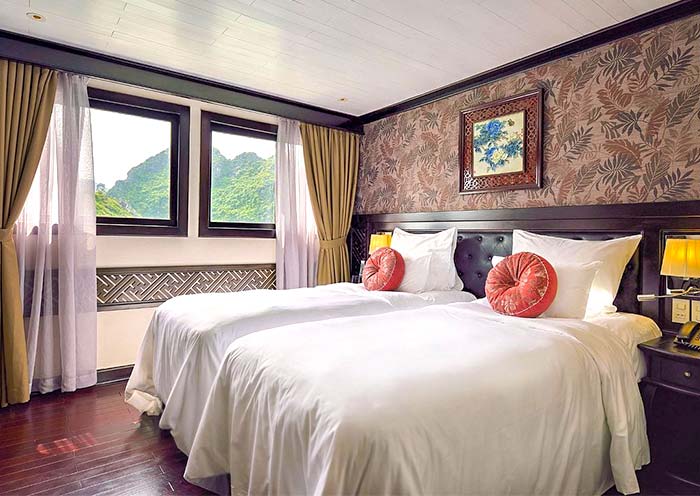
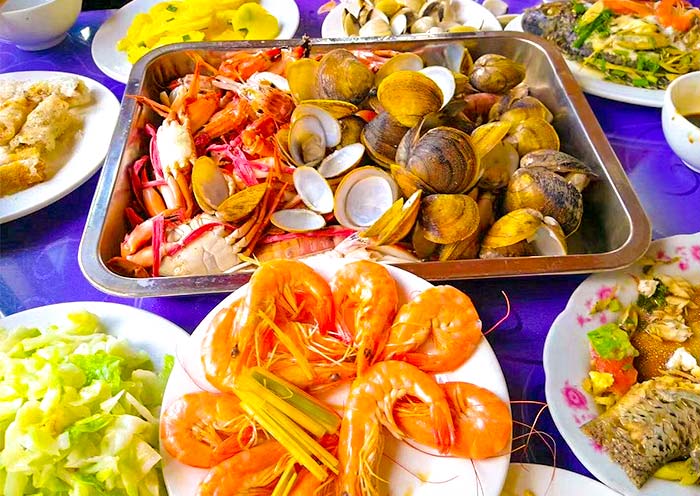
What to Eat in Vietnam
Vietnamese cuisine is renowned for its vibrant flavors, fresh ingredients, and diverse culinary traditions. From street food to fine dining, here are some must-try dishes when exploring the culinary delights of Vietnam:
- Pho: Considered Vietnam's national dish, pho is a flavorful and aromatic noodle soup. It typically consists of rice noodles, a rich beef or chicken broth, and thinly sliced meat (usually beef or chicken). Pho is commonly garnished with fresh herbs, bean sprouts, lime, and chili.
- Banh Mi: This iconic Vietnamese sandwich is a fusion of French and Vietnamese flavors. It features a crispy baguette filled with various ingredients like pork belly, pâté, pickled vegetables, fresh herbs, and chili sauce. Banh mi is a delicious and affordable street food option.
- Bun Cha: Originating from Hanoi, bun cha is a popular dish consisting of grilled pork patties served with rice noodles, fresh herbs, and a sweet and savory dipping sauce. It's a delightful combination of flavors and textures.
- Fresh Spring Rolls (Goi Cuon): These translucent rice paper rolls are filled with a refreshing mix of herbs, vermicelli noodles, and either shrimp, pork, or tofu. They are often served with a peanut dipping sauce and make for a light and healthy appetizer.
- Cao Lau: Hailing from the ancient city of Hoi An, cao lau is a unique dish that combines thick rice noodles, slices of pork, bean sprouts, and fragrant herbs. What sets it apart is the use of water from a local well, which is believed to give the dish its distinct flavor.
- Banh Xeo: Known as Vietnamese savory pancakes, banh xeo are made with a rice flour batter and filled with a variety of ingredients such as shrimp, pork, bean sprouts, and herbs. They are typically served with lettuce leaves for wrapping and a dipping sauce.
- Com Tam: Translated as "broken rice," com tam is a popular dish in southern Vietnam. It typically features grilled pork chops, a fried egg, pickled vegetables, and a side of broken rice. The combination of flavors and textures makes it a satisfying meal.
- Cha Ca: Originating from Hanoi, cha ca is a flavorful dish of turmeric-marinated fish (usually catfish) that is pan-fried and served with herbs, vermicelli noodles, peanuts, and a dipping sauce. It's a specialty dish that showcases the unique flavors of northern Vietnam.
These are just a few highlights of the rich and diverse Vietnamese cuisine. From savory soups to fresh salads and delectable street food, Vietnam offers a culinary adventure that will satisfy any food lover's palate. Don't be afraid to explore local markets, street stalls, and family-run restaurants to discover hidden gems and experience the authentic flavors of Vietnam.
Best Vietnam Traditional Food: 15 Must-Try Vietnam Dishes
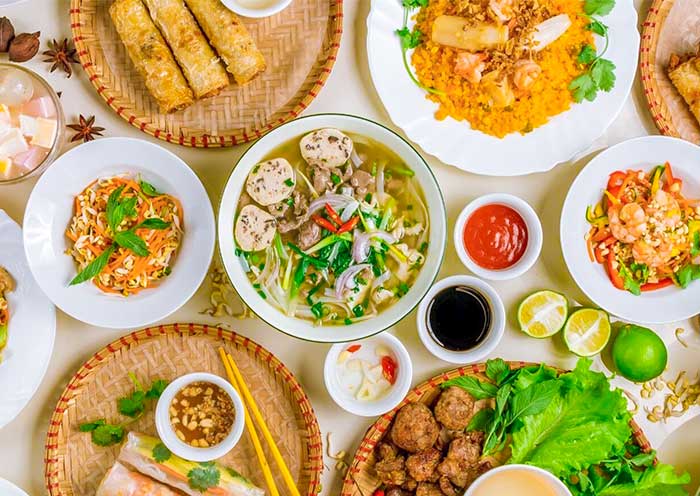
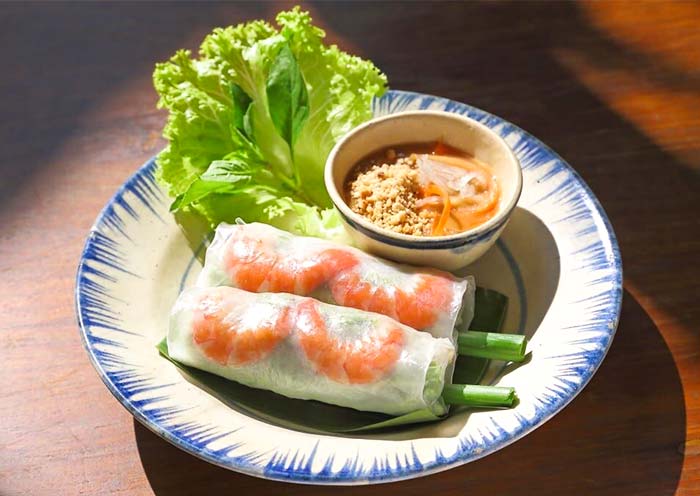
Extend Your Vietnam Trip to South Asia
After experiencing the vibrant culture, captivating landscapes, and rich history of Vietnam, you might consider extending your journey to explore equally enchanting destinations in Southeast Asia. Venturing beyond Vietnam, you can immerse yourself in the diverse charm of countries in the region, gaining a deeper understanding of their interconnected heritage and traditions. Thailand, Laos, Cambodia, and more can be excellent options for extending your trip.
If you have limited time, you can choose to extend your stay in any one of these countries for approximately 7-10 days. For a combined trip to three countries, such as Thailand, Vietnam, and Cambodia, you would need around 10-21 days. Exploring all four countries in one go would require even more time, potentially three weeks or more.
Best Time of Year to Visit Vietnam Thailand & Cambodia
Best Vietnam Traditional Food: 15 Must-Try Vietnam Dishes
How to Plan a Trip to Vietnam Thailand & Cambodia (10 Easy Steps)
Thailand Cambodia Vietnam Itinerary 10 Days: 5 Best Itinerary Ideas
3 Weeks Itinerary in Thailand Cambodia Vietnam: The Best Choice
Vietnam Thailand Cambodia Itinerary: From 10 Days to 3 Weeks
Travel with Asia Odyssey Travel (AOT) to Explore Vietnam
Travel to Vietnam with Asia Odyssey Travel (AOT) and immerse yourself in the captivating beauty and rich culture of Vietnam. As a trusted travel partner with over a decade of experience in the region, AOT offers a wide range of customizable Vietnam tour packages to cater to the preferences of every traveler. Whether you're seeking a family adventure, a romantic getaway, or a deep dive into Vietnam's history and cuisine, AOT has the expertise to create the perfect itinerary for you.
Useful Vietnam Travel Guide & Vietnam Travel Tips:
Best Time to Visit North Vietnam, How to Plan a Trip to Vietnam
Hanoi to Halong Bay Transportation, Vietnam Food,
Most Beautiful Places in Vietnam, Vietnam Itinerary
Vietnam Itinerary 7 Days, Vietnam Itinerary 10 Days
Ho Chi Minh City Attractions, Hanoi Attractions, Vietnam Attractions
Tour Packages:
Hanoi Tours, Halong Bay Tours, Hoi An Tours
Ho Chi Minh City Tours, Mekong Delta Tours
Northern Vietnam Tour, Southern Vietnam Tour, Central Vietnam Tour
Embark on an extraordinary adventure with Asia Odyssey Travel and explore the beauty, culture, and warm hospitality of Vietnam. Contact us today to start planning your dream vacation.
If you have any questions about this article, please contact us by submitting the following form and we'll immediately get back to you.



